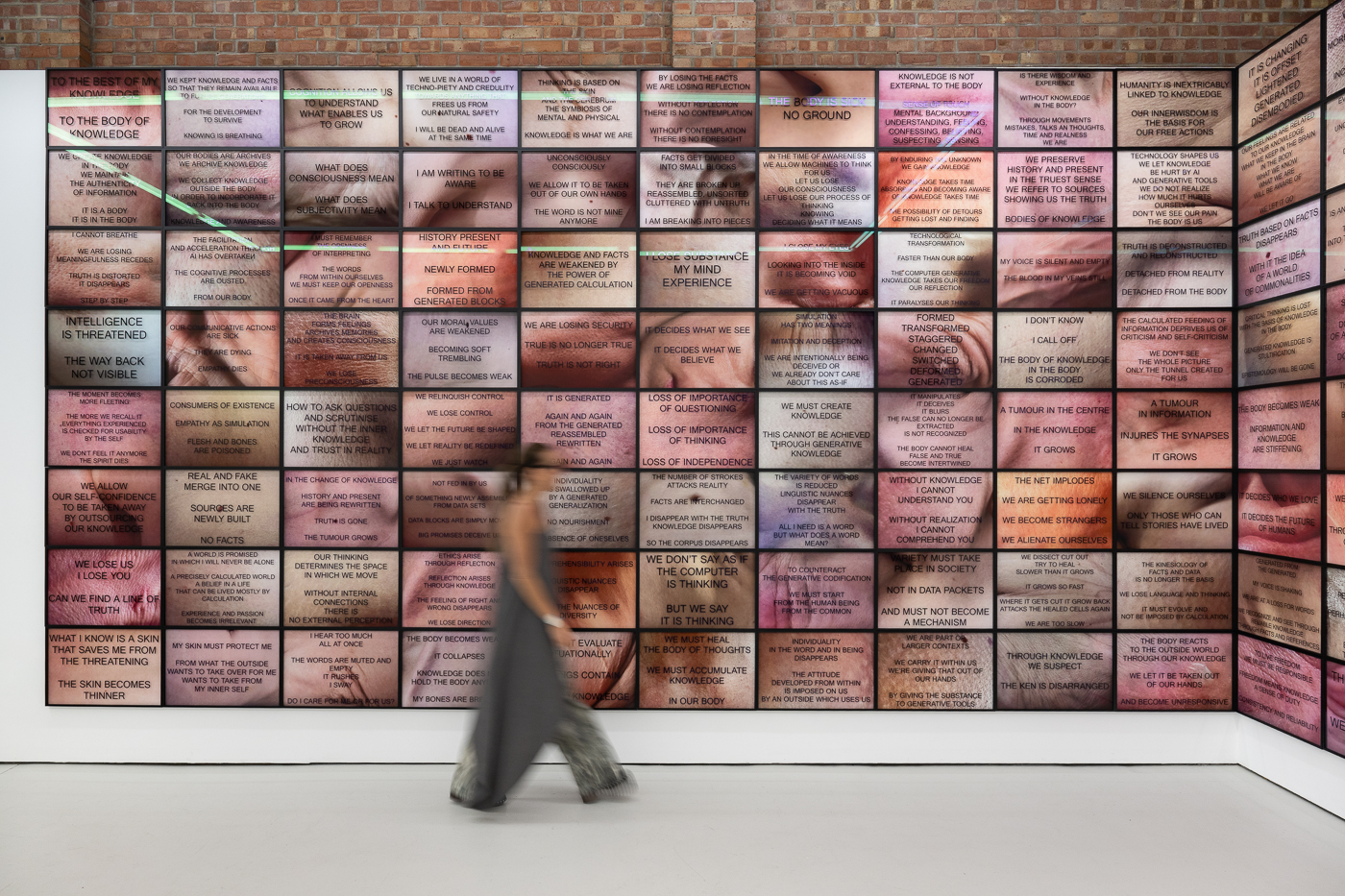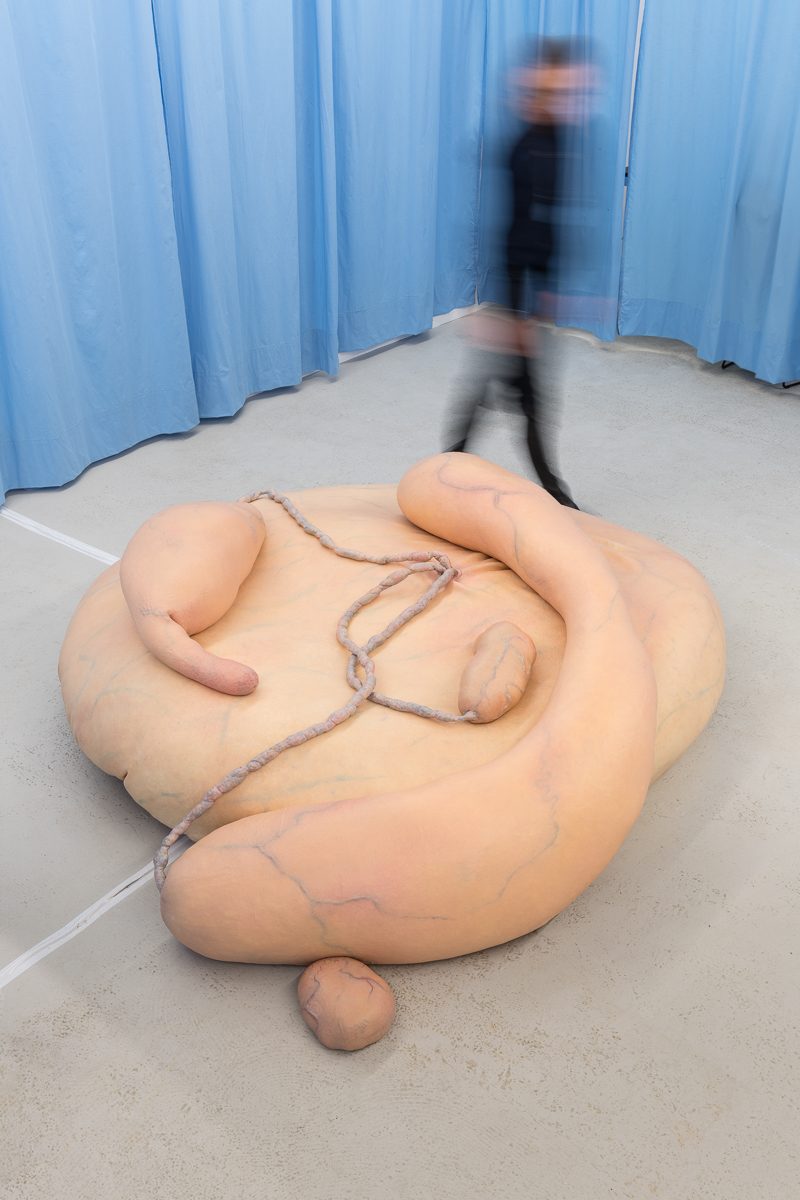Stine Deja and Marie Munk have been interviewed by Hold Residency, a digital exhibition and editorial platform; they talk about the tragedy of simulated intimacy and exploring the theme of isolation.
Synthetic Seduction
HOLD speaks with artists Stine Deja and Marie Munk in response to their show, Synthetic Seduction, at Annka Kultys Gallery, London
HOLD:Stine, your video works pick up on the oxymoronic value of simulated intimacy, could you tell us how the videos encapsulate this notion?
SD: The whole show revolves around the somewhat oxymoronic notion of synthetic seduction. My videos explore the potential of simulated intimacy and play-out various hypothetical scenes of humans and non-humans enacting intimacy towards each other.
I think overall I see the idea of simulated intimacy as tragic for everyone/everything involved. Human intimacy with non-humans is unrequited and misunderstood, while intimacy between non-humans is flat and cliche, a replica of something that existed somewhere far removed. I also believe though that people connect with the videos because they project something into it, and that in itself is a layer of intimacy that is generated through the show. This is probably most evident in the ‘Foreigner’ piece, it’s impossible for the viewer not to project human feelings of sympathy onto the character and imagine that it really is yearning for love – even though deep down we know they are not capable of that.
This intimacy-play is written into the whole experience of the show as you are forced to sit on and interact with skin-like sculptures which you sub-conciously stroke and bond with, which may be soothing to you [the viewer] but is laced with tragedy when you recognise that they are not actually ‘real’ and can’t ‘feel’ your attention.
HOLD:Marie, your interactive work allows viewers to physically engage with the simulation of skin and the sensations associated with living beings. Manifesting as a hyper-conglomerate between bodies and the objects to support them [seating], what was your intention in creating this user experience?
MM: Making the artwork something people had to experience and engage with was an important factor for Stine and I from the very beginning. We wanted to create an alternative reality for people to explore rather than an artwork to look at. Like the developing fear or lack of touch in our mixed reality social life, there is a very solid ‘no touching’ attitude in the art world. We found it interesting to give visitors a different experience of art. It made sense for us, working with this topic, to stimulate more than the visual and audial sense.
We see a lot of so-called solutions popping up on the market these days – inflatable ”hug” jackets, interactive teddies and robotic surrogates – all promising a just-as-good replacement of physical human contact. For me these kind of products raise a huge and groundbreaking question. They really touch upon the very core of what most of us believe is what makes us human. If machines can be empathic and be emotional, what is then distinguishing us humans from them? This will inevitably breed a paradigm shift in how we understand ourselves as human beings and question the role of our biological form.
With the hyper-conglomerate, as you call it, I wanted visitors to get an uncanny experience of a “skin product”. It is also funny that ‘Skin-to- Skin’, as it is titled, is placed in front of the TV screen as if it was a couch – I like the connotations that brings along. I think the emotional journey people go through when they take part in this work is both repelling and very satisfying, weird and familiar, I like this balance, it makes people reflect.
HOLD:Stine, considering the soundtrack within one of your works -featuring 80’s hit ‘I wanna know what love is’ you humorously highlight the present latency of robots, despite the possibility of algorithmic developments. Does the work imply that the current aesthetic and emotional intellect of robots is in fact their appeal?
SD: There is definitely something super appealing about the way robots look and how they try to mock humans in every sense possible. I’m super fascinated by how Sofia the robot as an example gained so much popularity, a citizenship and a cover of a fashion magazine. People love her and want to look like her, despite her ‘flaws’.
In the Foreigner video, the singing character has all the expressions of someone losing themselves in a romantic song, which evokes complicated feelings for the viewer who is aware of the fact that the character is non-human and incapable of “knowing what love is”. What’s unclear is if the character is trying to mock or copy the expression of humans or if there’s a genuine will to feel something- this could be interpreted as either sinister or tragic. I think that many people have a gradual unravelling watching this film – it’s really humorous, then heart-warming and then ultimately quite sad.
HOLD:Marie, could you touch on your utilisation of synthetic skins relative to superficiality?
MM: Sure. Well, actually my artistic practice have long been full of frustration about the fact that no matter what, within my lifetime at least, I could never use human skin as an artistic material in my work. There’s obviously ways, like Orlan who uses her own skin. But this has never really been my artistic vision, though I love her work. I want to use skin like you use clay, then silicone is as close as you get. This said, I have not tried to achieve a super hyper realistic look like Patricia Piccinini or Ron Mueck. In my work you can still sense the human labour that has gone into the work, I kind of like that, it gives them another human element. As you say, the synthetic skin also somehow illustrates superficiality – for me in the sense, that this is the material that is used to make robots look human or used for Real Dolls, which are essentially produced as surrogates for human presence. I still believe that it is superficial to think that these stand-ins can replace human physical contact.
HOLD:The works occupy the gallery synergistically so that space, presented within a horizon of hospital curtains, becomes a functional place in which viewers become experiencers. Given the title, do you think that the users of the space are obedient in being seduced by the tactics you have employed in relation to synthetic methods of seduction?
MM / SD: It seems like most visitors are a bit hesitant when they first enter the space, but then as they are invited to both touch, sit and relax they are really opening up and letting go. Some people end up staying for hours – watching the films multiple times, whilst finding comfort and closeness in the sculptures.
The placement of the works is something we have discussed from a very early stage, we wanted to get the visitors into the right frame of mind to give in to the experience and in this sense ‘Skin-toSkin’ and ‘The Intimacy Package’ compliment each other a lot.


